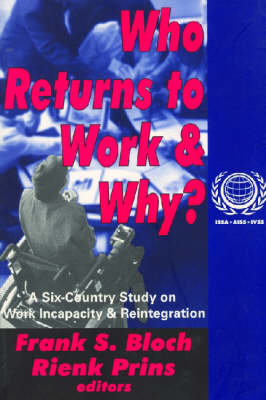International Social Security
1 total work
Work incapacity has become a major social problem in most industrialized countries. It increases social expenditures for sickness and disability programs and declines in labor force participation rates. Most measures taken in an effort to counter this trend focus on narrowing eligibility criteria or reducing levels and duration of benefit payments. Others aim instead to restore health and work capacity, and to stimulate return to work.Who Returns to Work and Why? examines a wide range of interventions directed at work incapacity and reintegration that are used currently by social security institutions, health care providers, and employers. It draws on data from six longitudinal studies of day-to-day practices and experiences in Denmark, Germany, Israel, the Netherlands, Sweden, and the United States. Sponsored by the International Social Security Association's project on work incapacity and reintegration (WIR project), this volume addresses key questions: do various interventions (by social security and health care systems) found in different countries make a difference as to work resumption patterns? If so, what are the best interventions?The contributors, lead researchers from the six countries involved in the WIR Project, provide a contextual background for the studies, including a comprehensive review of related literature; extensive descriptions of the measures taken by health care providers, employers, social security and other agencies, and the clients themselves, including medical interventions and vocational and other non-medical interventions; and qualitative and quantitative cross-national analyses of the measures applied, their impact on work resumption, and the role of incentives and disincentives. This book will be of special interest to policy makers, administrators, and scholars, as well as to doctors and other practitioners involved in rehabilitation and reintegration.
